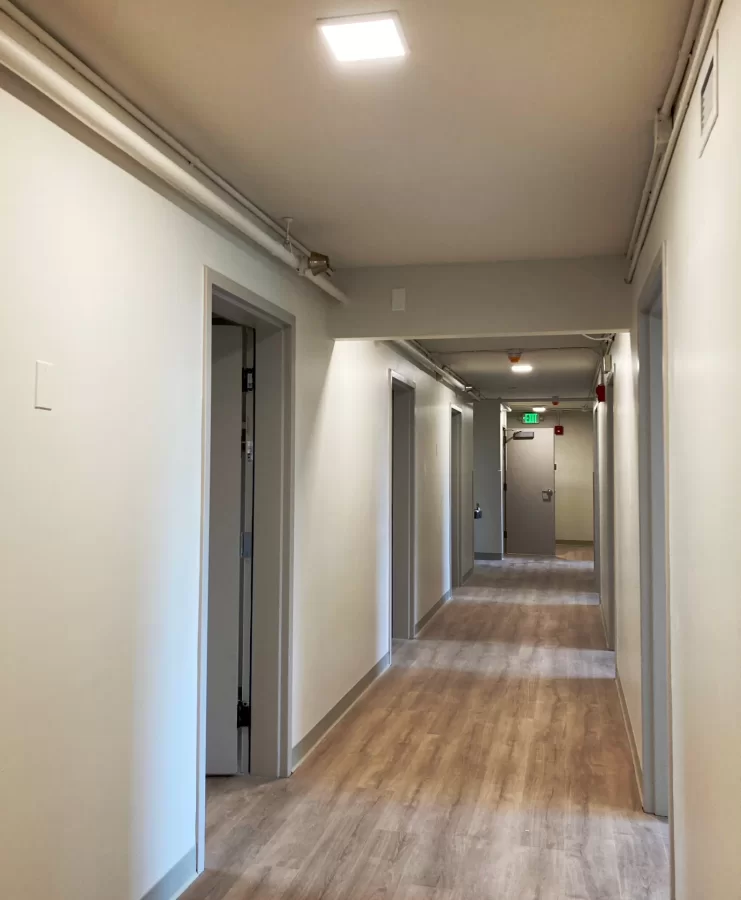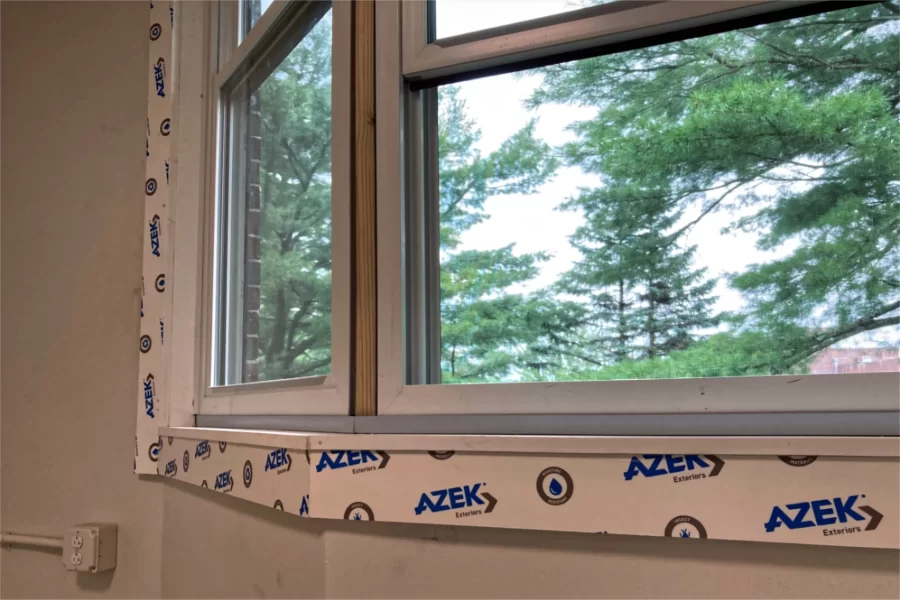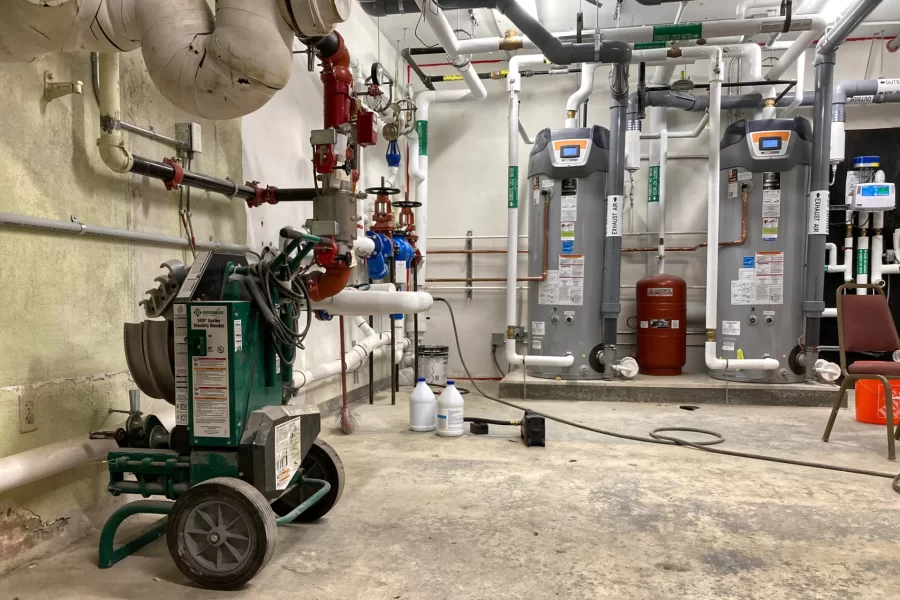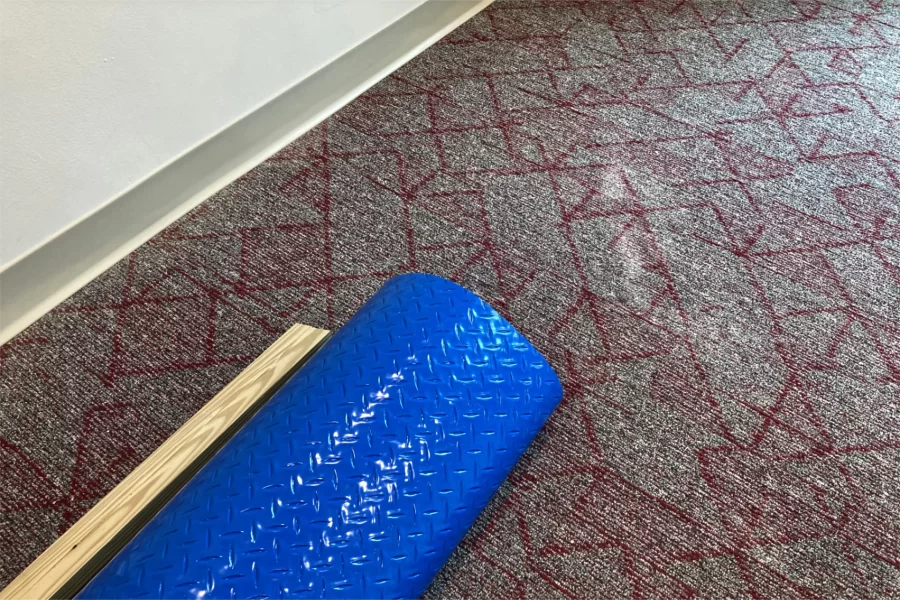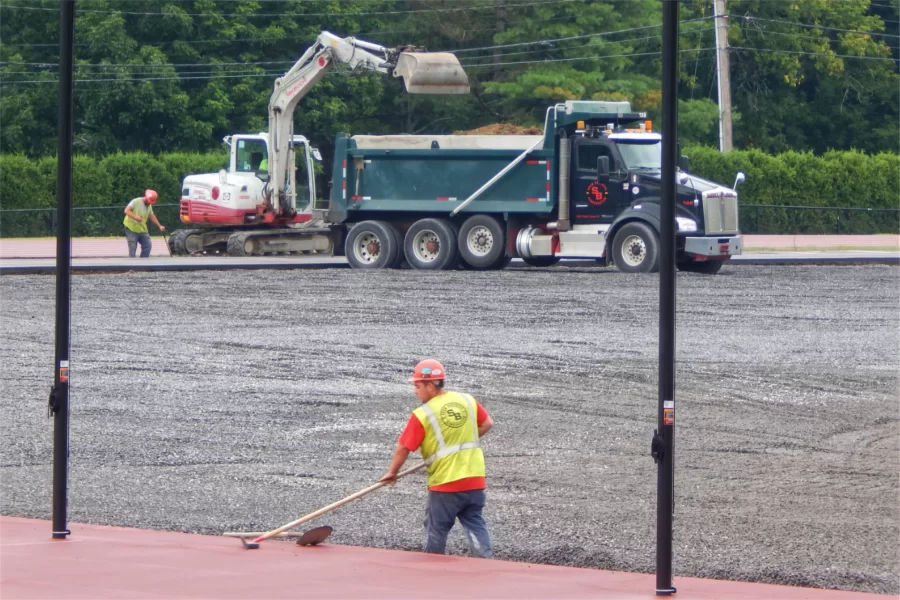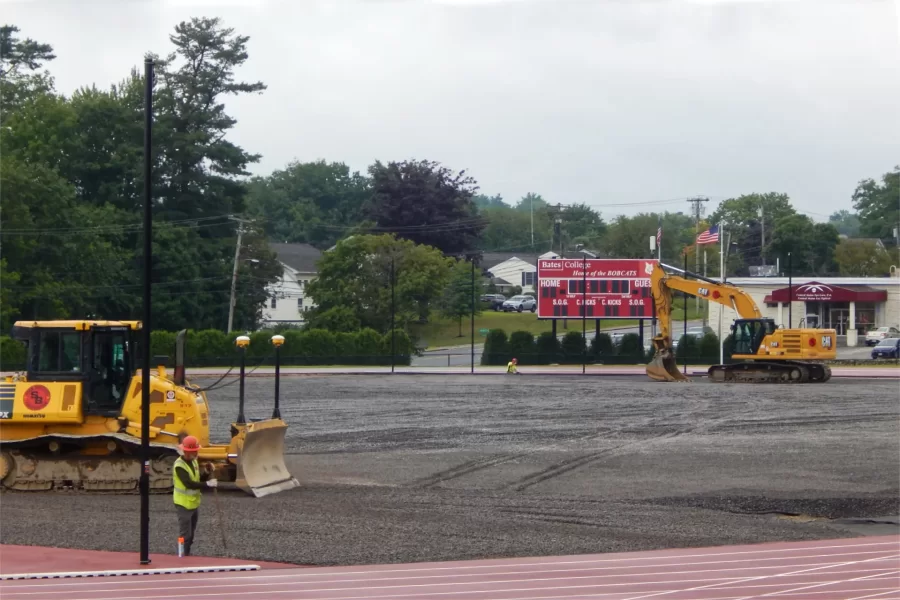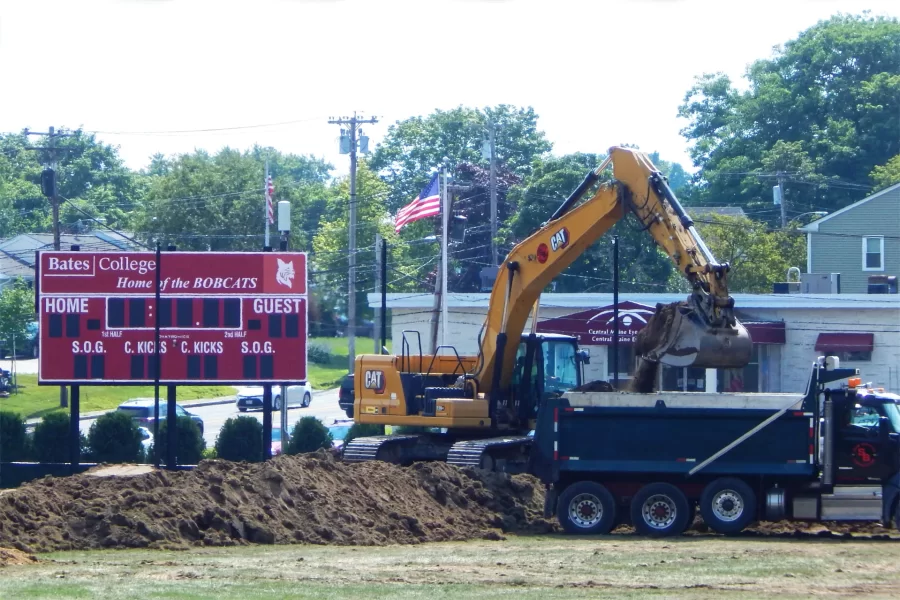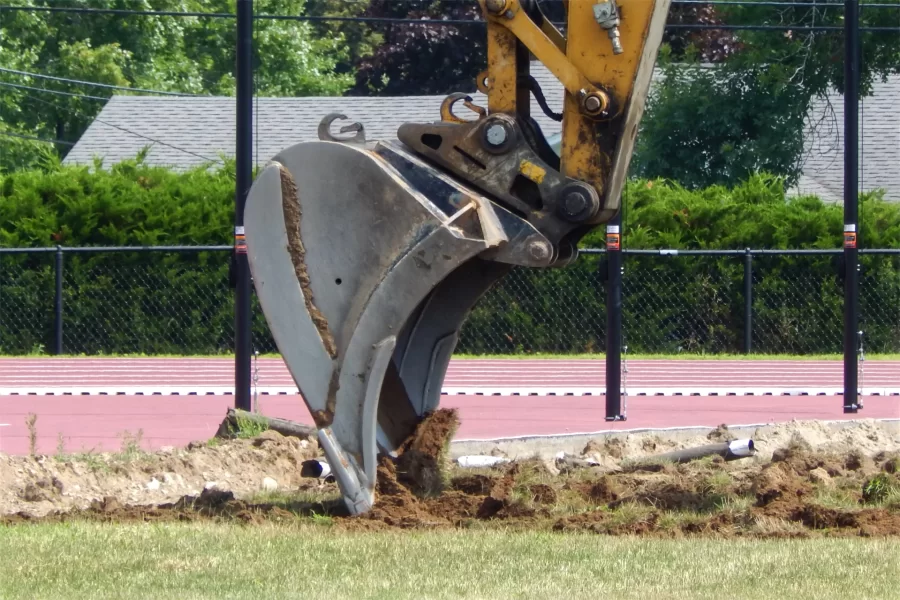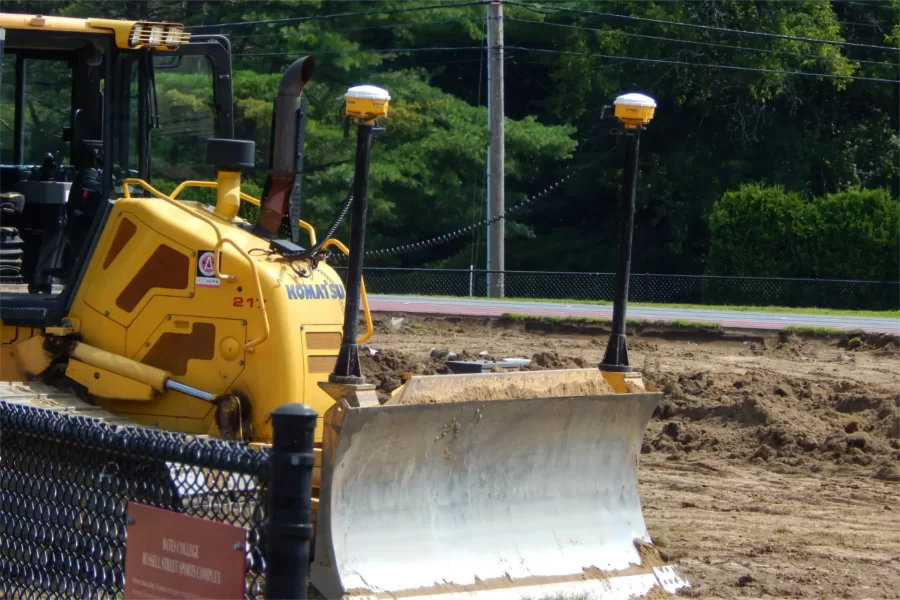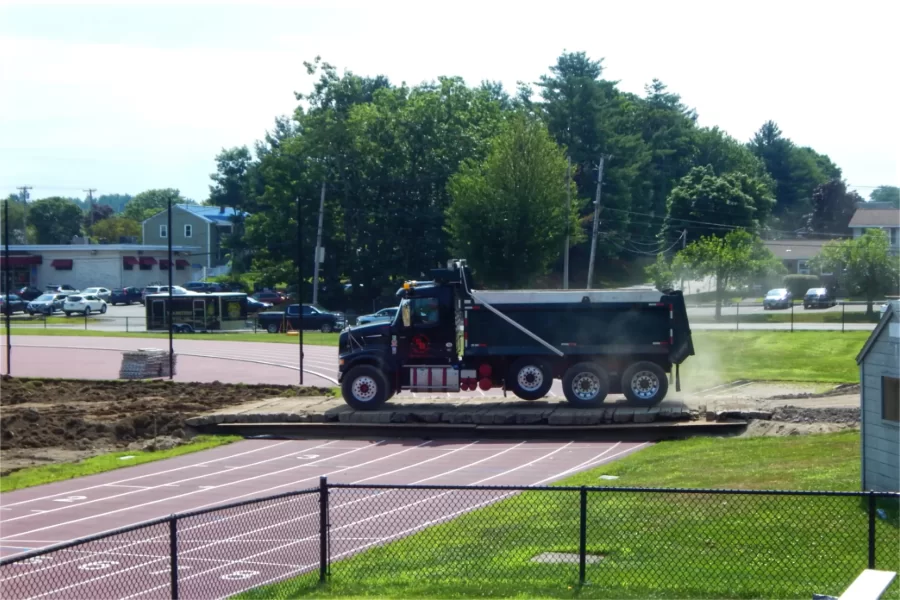
Begun last year, a facilities project with a powerful resonance for Bates people — a resonance both historic and literal — was completed last week.
Since July 30, a new mechanism has been tolling the noon hour every day on the venerable Hathorn Hall bell. The new striker whacks the outside of the 167-year-old bell, in contrast to the old-school electric mechanism it replaced, which sounded the bell by swinging it so that a clapper would strike the inside. (Still earlier, students were hired to live in Hathorn and ring the bell.)
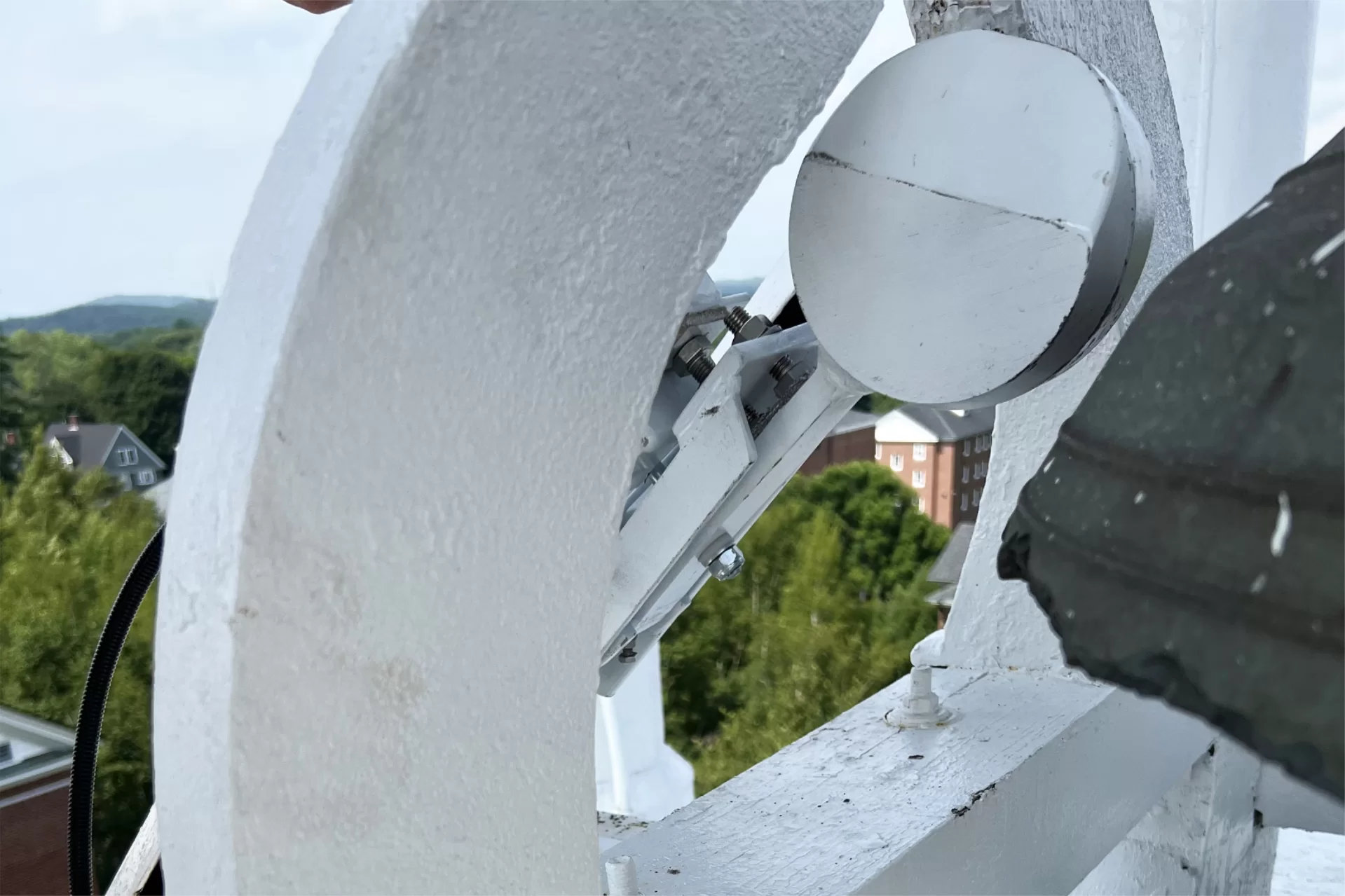
The road to the replacement was long, involving considerable work to improve access to and conditions within Hathorn’s attic and belfry. (And replacement of HVAC machinery in the attic coincided with the bell work.) The last steps needed in the run-up to the striker, says Alan Kelley, Bates’ manager of mechanical and electrical services, promoted “safe access to the actual bell” — improvements to the belfry ladders and creation of a tie-off point for fall protection.
The striker was fabricated by Elderhorst Bells of Palm, Pa. Bates electricians installed it, with assistance from clock expert Peter Rioux of Winterport, Maine. Rioux, says Kelley, helped position “the new striker and set up the new bell controller.” (The striker controls are located elsewhere in Hathorn.)
Kelley adds that a smartphone app will eventually become an additional means of operating the bell. “Information and Library Services is figuring out the needed network configuration and level of security for this feature. We’re also purchasing a remote control that can be used to manually control the bell for special occasions.”
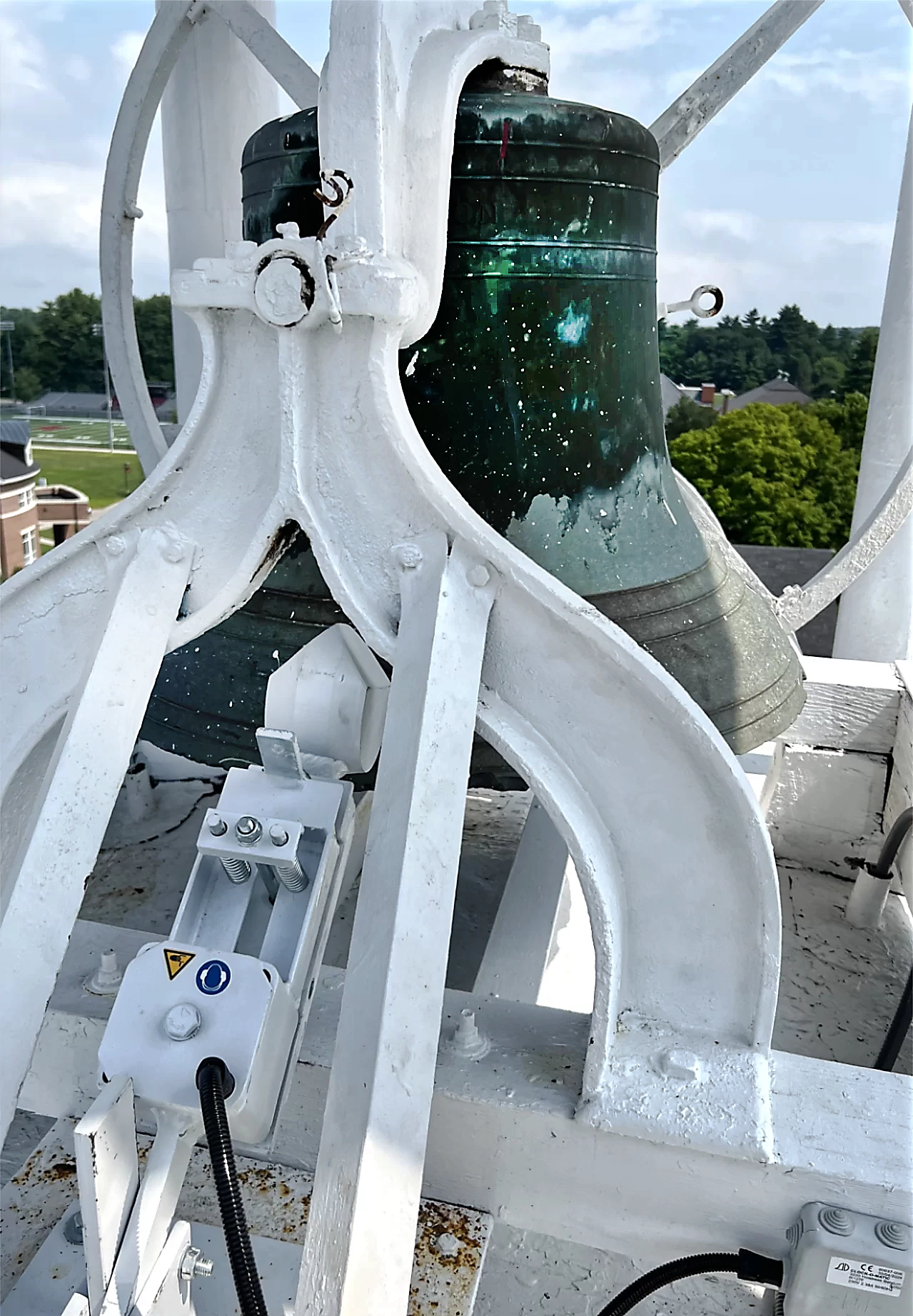
Don’t fence us out: Walking up Campus Avenue last week, we were pleased to see the latest addition to Bates’ fleet of student residences — literally pleased to see it, because the fence that had largely hidden construction activities at 96 Campus Avenue from passers-by was gone.
Built as a Sisters of Charity convent in 1977 and later given over to offices, 96 Campus Avenue has spent much of 2024 becoming Bates’ newest student residence. The fence that wasn’t there last week is just one of several outward signs that the building’s transformation is near its end.
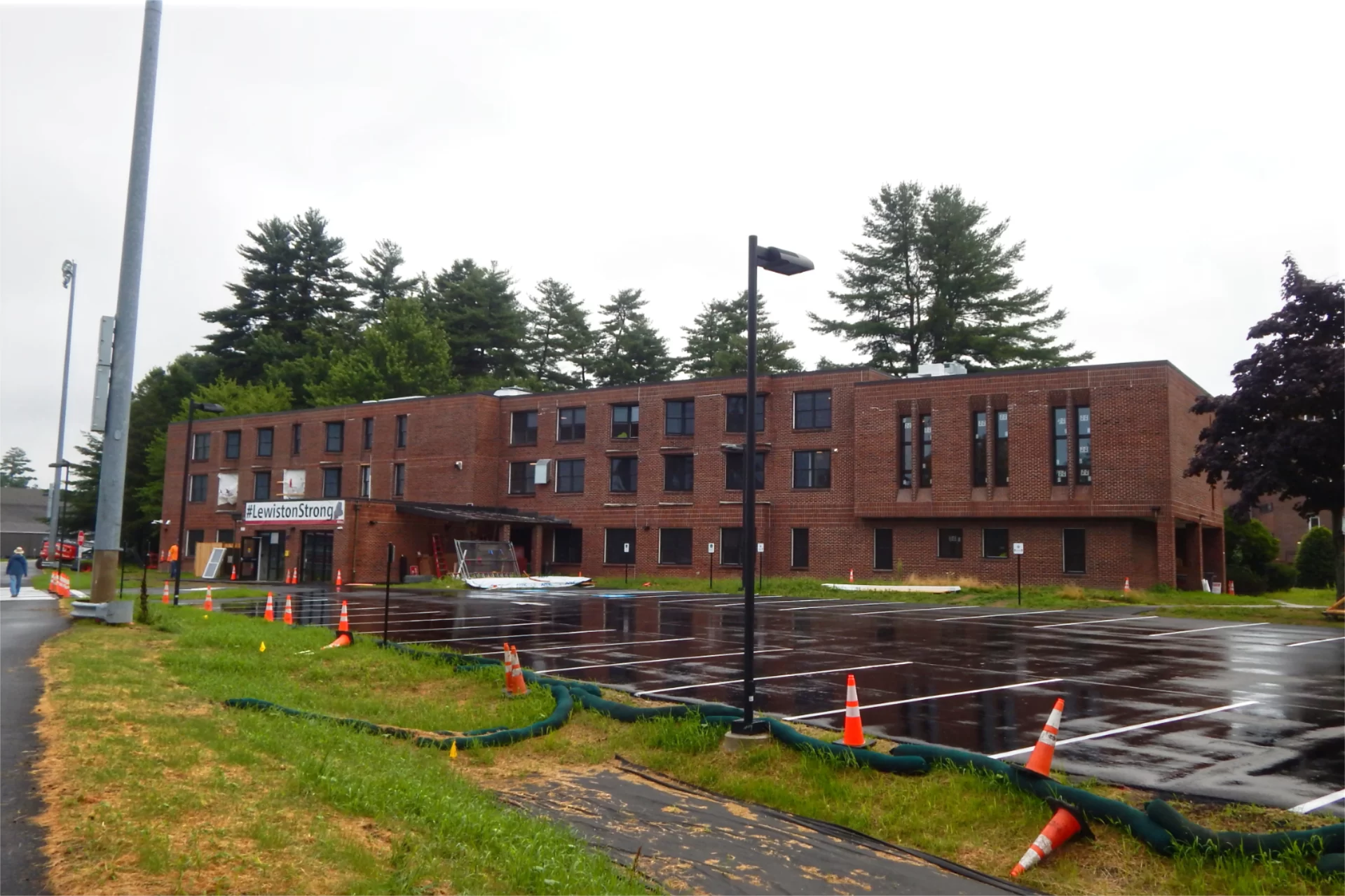
What else? There are many fewer people at work there (and therefore fewer vehicles). The parking lot has been paved and striped and its signage installed.
The installation of new windows and other glasswork, which has been the project team’s top priority for the last few weeks, is all but done. All the metal-and-glass “storefront” units are in place, but window trim is still being fitted and painted, and seams being caulked, both inside and out.
Perhaps the most important markers of progress, though, aren’t obvious: A formal inspection by the city of Lewiston scheduled for Aug. 9 is expected to lead to Bates’ certificate of occupancy, allowing the college to start using the building. “The big push (these days) is to get ready for that,” Bates project manager Brian Lanoie told us during our July 30 visit.
Around the same time, in a similar vein, the company that has managed the project for Bates will return formal control of 96 Campus Avenue to the college. In a contractual action known as “substantial completion,” this is when Bates and Consigli Construction, which has partnered with the college on major construction projects dating back at least to 2006, mutually declare that the building is ready for its intended use.
As Campus Construction Update likes to remind you, since we are continually rediscovering it ourselves, things lead to other things. In the category of formal inspections, for instance, Lanoie noted that city approval of all the above-ceiling electrical work was attained on July 29. (Not to be confused with “the above ceiling electrical work,” as we hadn’t mentioned any yet.)
That gave the ceiling installers the green light to install the rest of the drop-ceiling tiles on the first floor, a process known in the trade as “flooding.” (This strikes us as a much neater way to flood a ceiling than some we have tried. But we won’t comment on the logic of calling something “drop” that is placed above one’s head. Unless you have flooded the ceiling with water, in which case it could also be called a “drip ceiling.”)
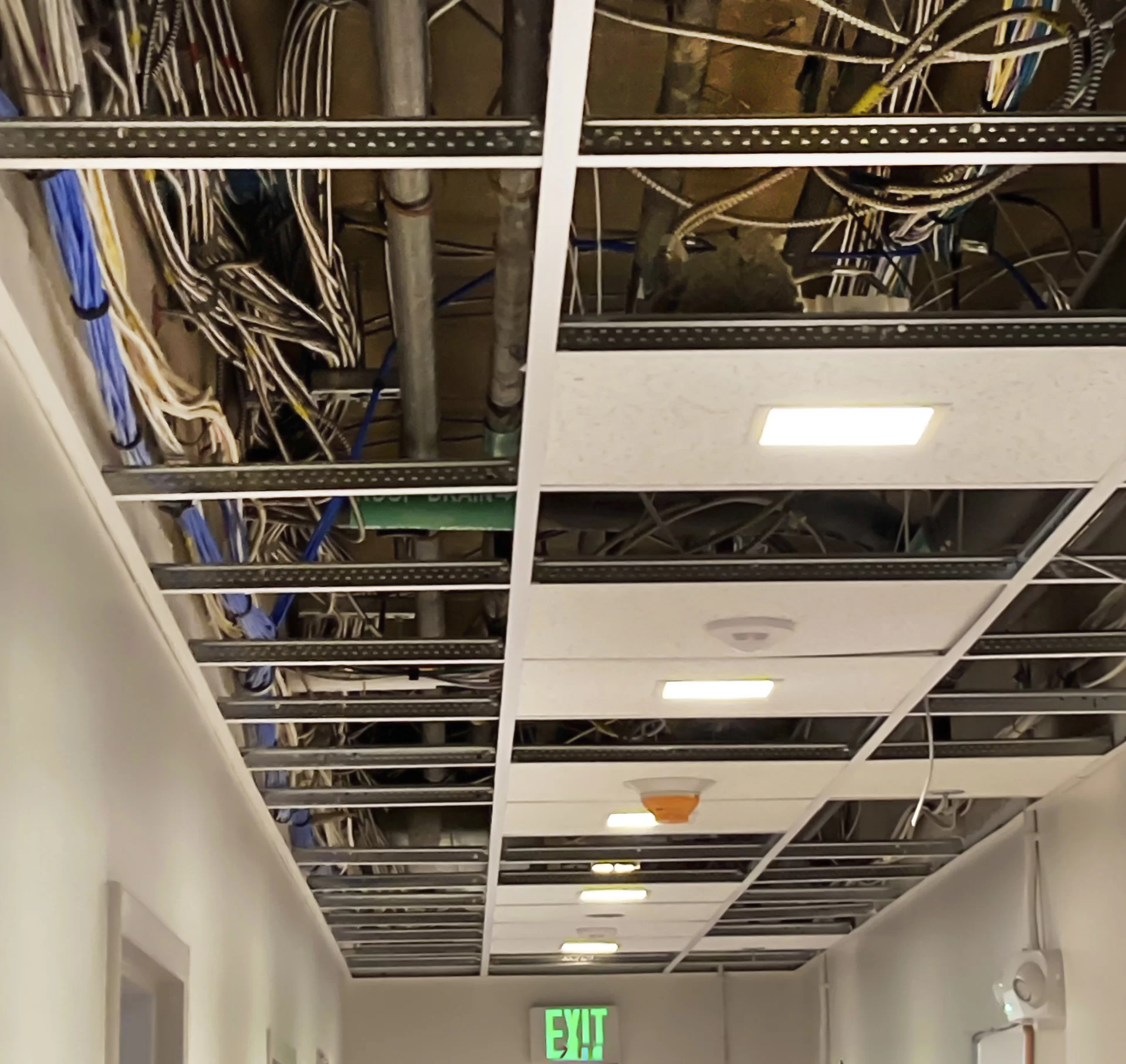
Meanwhile, punch-listing is well underway. Not to be mistaken for a key step in summer-party planning, this is a conclusive round of detailed construction inspections and consequent repairs. Engineers from the firm that designed the 96 Campus Avenue conversion, Lavallee | Brensinger Architects, began that process in mid-July.
Also in train is commissioning, the protocol of testing and adjusting major systems such as HVAC and domestic water heating. Like punch-listing, commissioning starts late in a construction project, but differs in that it can stretch out into months. That’s because demands on machinery change as the seasons change.
On top of all that, beds and mattresses arrived and were installed on Aug. 5, and all of the lounge furniture two days later. New England Woodcraft of Forest Dale, Vt., is providing student-room furniture aside from mattresses, which come from Bourdon’s Institutional Sales of Claremont, N.H. Based in Portland, Creative Office Resources is outfitting the lounge areas at 96 Campus Avenue.
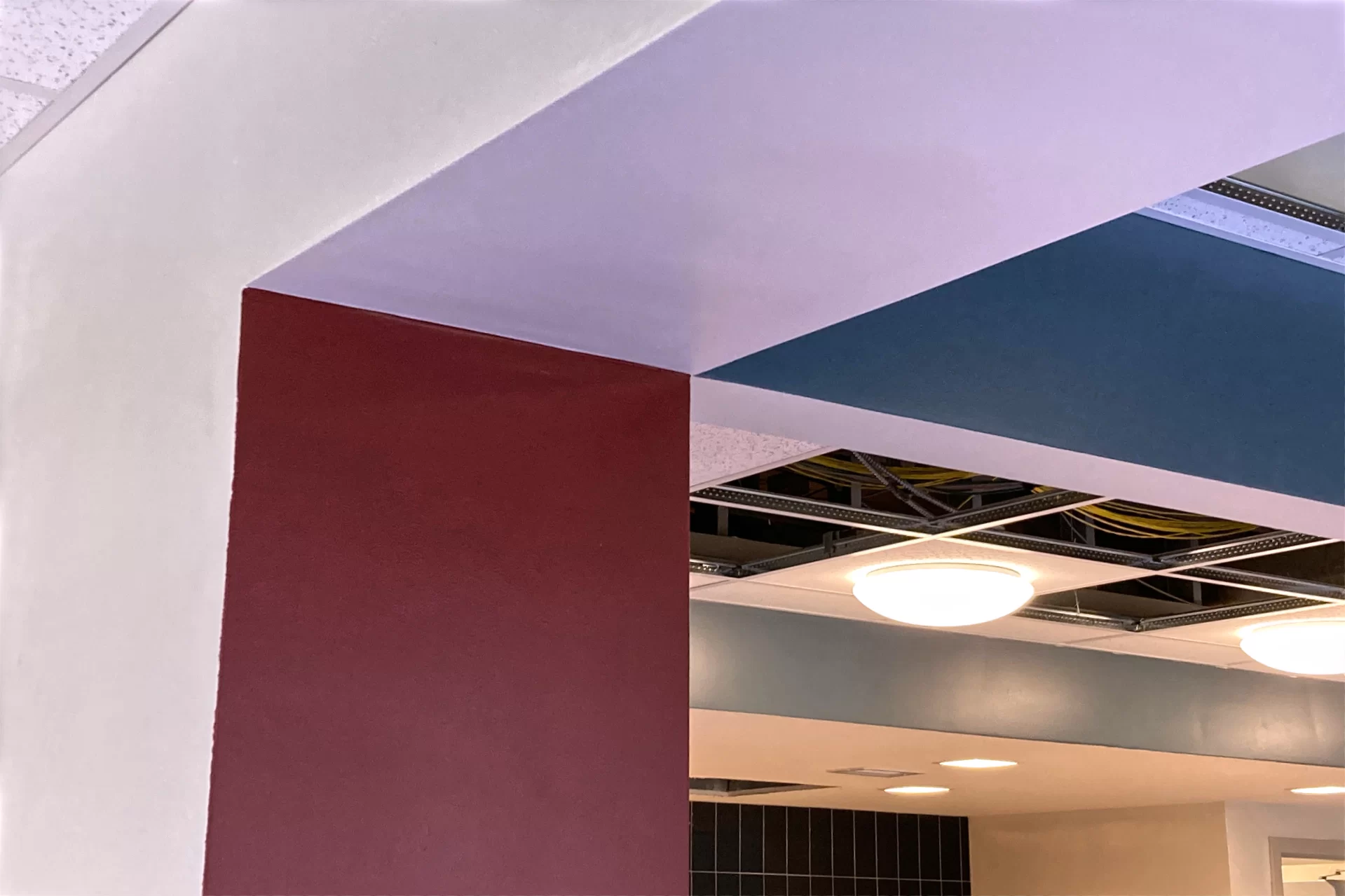
Lanoie explained during our tour that Bates Residence Life staff and the project architects took the lead in selecting styles and colors for the new furniture. “We typically give the design team as much creativity as they want,” Lanoie said — but he and Res Life folks also examined furnishings already in use around campus, as well as visiting the Creative Office Resources showroom.
“You’ll see some pieces that are similar to what you see in other Bates residence halls,” he said. “Certainly the fabrics will be different, more in line with the color scheme of the building.”
Finally, Lanoie informed us that Facility Services tradespeople have started training on technical systems at the new dorm — so-called owner training. Training on mechanical and sprinkler systems took place in mid-July and plumbing training at the beginning of this month.
“So that’s good. That’s a sign that we’re getting close” to completion, Lanoie said.
He added, “The ping-pong table arrives on Aug. 8.”
Get the LED in: When we swung by Russell Street Field on July 30, a few workers and fewer machines were tending to the subgrade recently placed in the oval expanse inside the track. The team from Shaw Brothers, a prominent earthworks firm based in Gorham, Maine, were finalizing the depth, contours, and other details of the gray crushed stone that constitutes the subgrade.
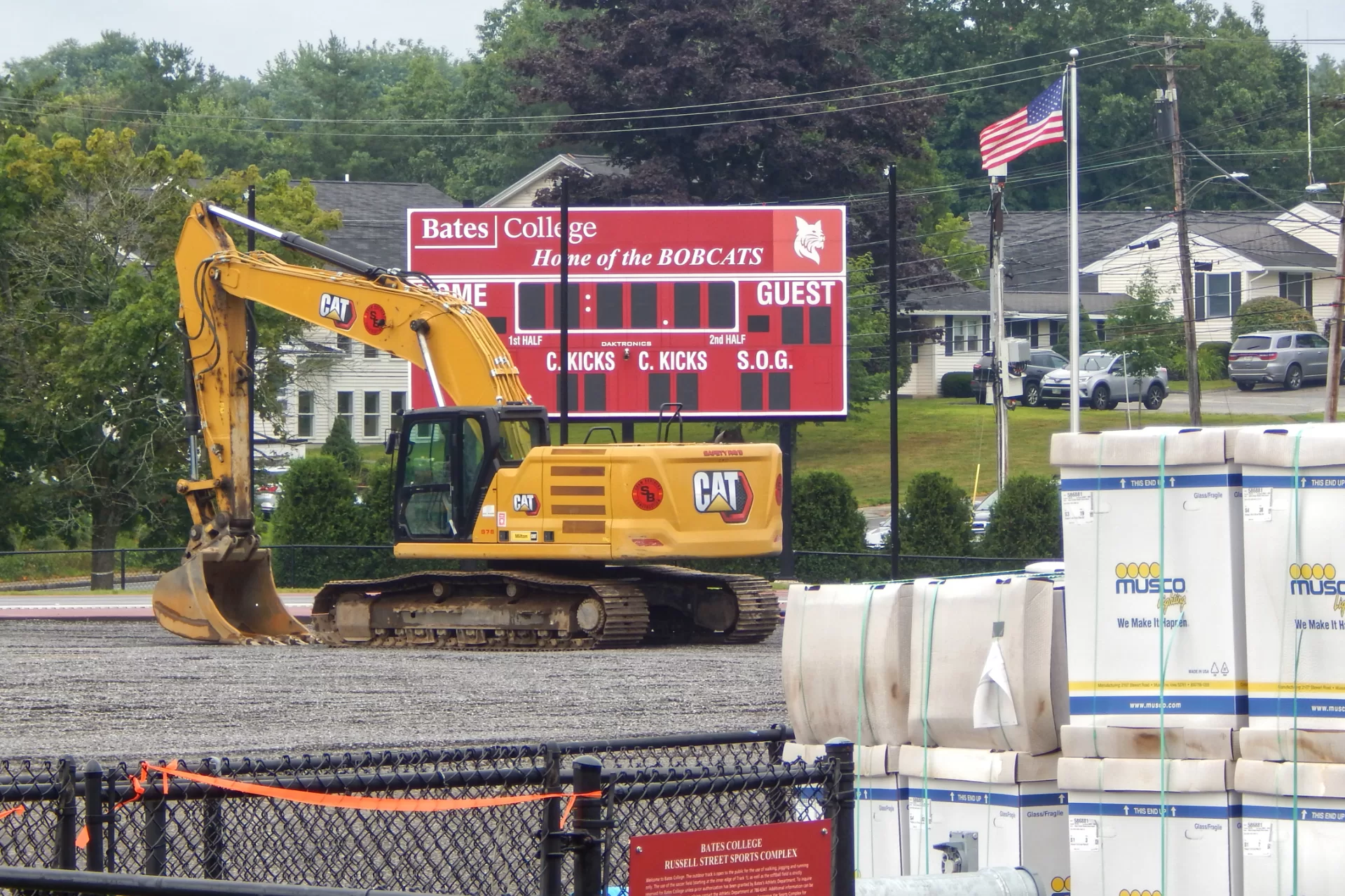
All this was in preparation for installation of a new synthetic playing surface, a composition of plastic grass, sand, and rubber crumbs that will replace the living grass that had failed to thrive there after its placement in 2019. That replacement will not only provide a durable surface but also vastly expand the field’s availability and its use beyond soccer.
But the CORE field turf, a product line manufactured in Georgia by the field turf manufacturer FieldTurf, won’t appear quite yet. This week a concrete curb is being poured around the outside of the oval. Strips of wood, so-called nailers, will be attached to this curb, and the turf will be nailed to the nailers. (The circularity, or perhaps ovality, of this description boggles the mind.)
The nails attaching the turf will be stainless steel and there will be about 1,320 of them, driven around the field’s quarter-mile circumference at the rate of one per foot, says Paul Farnsworth, Bates project manager for the project.
After the curb and nailers are in place, some minor electrical work will have to be done, Farnsworth added. “And then it’s a last check on the grading before they call in the turf field people.”
Those people are scheduled to get to work during the last week of August.
In the meantime, though, installation of new field lights has begun. This week foundation holes for two of the four Musco-brand lights were dug on the bleachers side of the field. The foundations, 8-foot-long precast concrete tubes, will be planted next, followed by the setting-up of poles and lights. Two more lights will be installed on the Russell Street side.
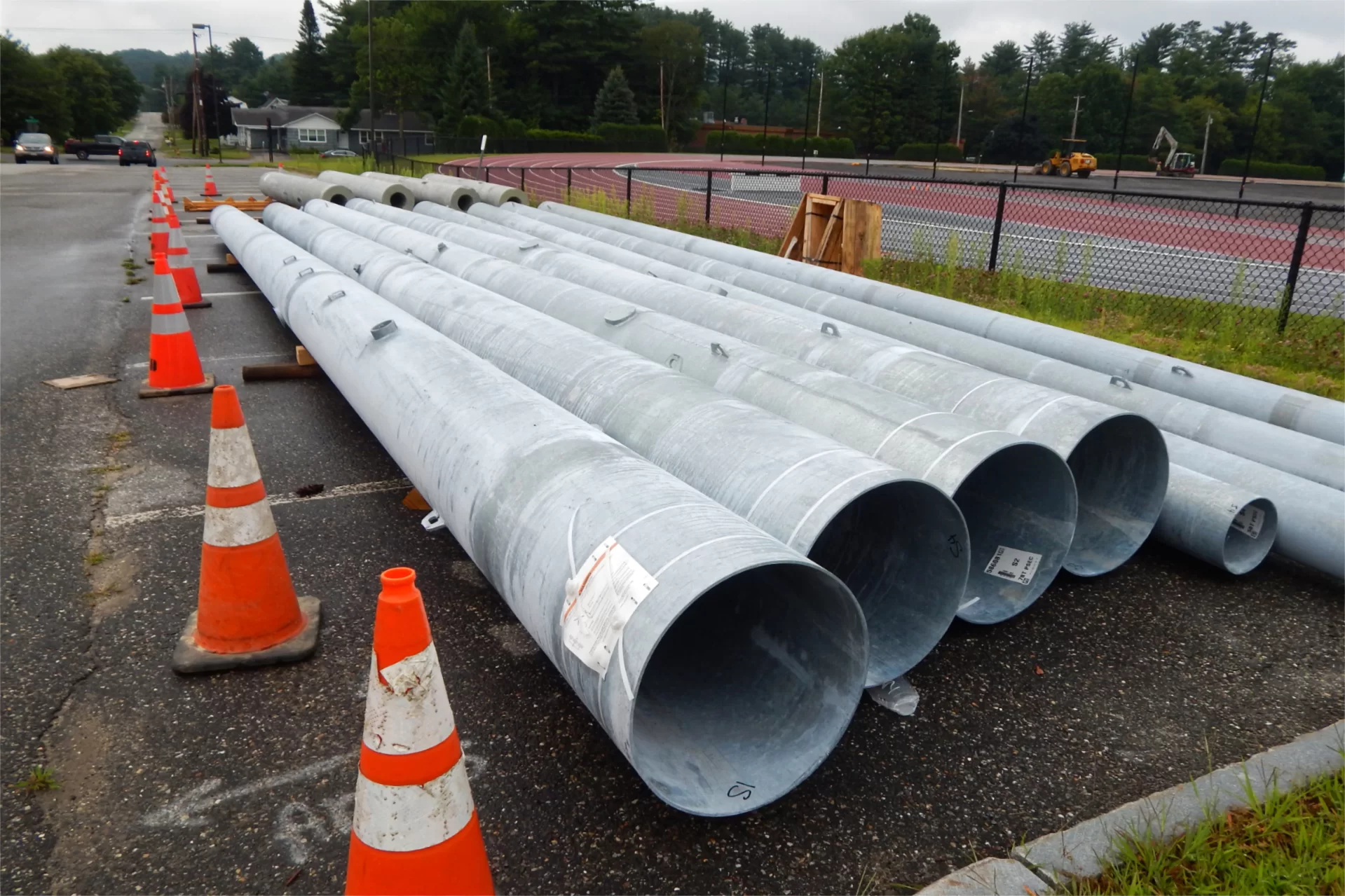
Bates has been using Musco lights for years, with arrays around Garcelon and Campus Avenue fields. But the new lights will be LED, as opposed to the metal halide lamps in use at Garcelon and Campus Avenue. (Metal halide lamps, like the more familiar mercury vapor units, use high-intensity gas discharge technology. Metal halide units are long-lasting and at least 10 times more efficient than incandescent bulbs, according to the U.S. Department of Energy, but LED still beats ’em both.)
Can we talk? Campus Construction Update loves to hear from you. Please send questions, comments, reminiscences, and inflammatory speculation about construction at Bates College to dhubley@bates.edu, with “Campus Construction” or “What kind of punch tastes good with a knuckle sandwich?” in the subject line.
